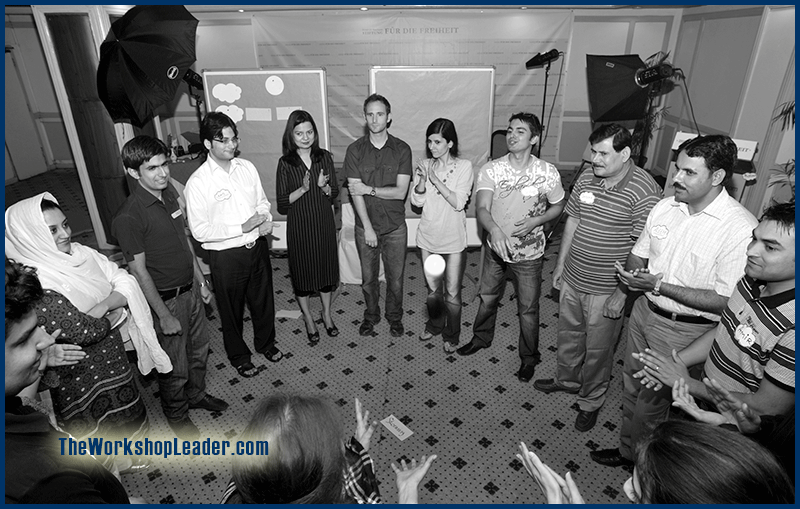Never doubt that a small group of thoughtful, committed citizens can change the world; indeed, it’s the only thing that ever has.
Margaret Mead (1901–1978)
Cultural Anthropologist
Facilitating groups can be the most rewarding core activity of workshops. Observing the group process, seeing them grow and perform, and finally harvesting the rewards of your efforts by having people with more knowledge, skills, or/and better attitudes. This is a wonderful feeling!

Procedure of group facilitation
That group facilitation can happen and in a successful way, you should plan and prepare properly. Remember: Success comes when preparation meets opportunity.
Objectives
Every session, every module, every part of a workshop has a specific objective. Accordingly, also a group facilitation contributes to the overall workshop’s output or outcome objective. The group facilitation is not merely l’art pour l’art, not just because you want to do something interactive. So, what do you want to achieve by a particular choice of facilitation technique?
Planning
Choose one of the suggested facilitation techniques below – or search others up – which fulfils your objectives. Fit it into your workshop plan according to the stage you expect the group to be in. This will be in most cases performing, sometimes also norming.
Ressources
We have mentioned for all facilitation techniques the required resources. This will make it easy for your copy them into your workshop plan and prepare them accordingly. Have them at hand and check their functionality better a day before.
Execution
For making things happen and a group of people act, be clear and concise what they should do and what you expect. You cannot explain it simple enough. And you should repeat it. There will always be participants who are not focused for a few moments, some who don’t understand your wording etc.
The best is to have it in written and explain it orally at the same time. The better understood, the less frictions you’ll encounter during the execution.
Observation and Correction
The procedure of your facilitation technique should work as planned. Mostly it doesn’t 100%. So, observe and
One criteria is the correct application of the technique. Therefor, study it properly and have the description at hand if you are not familiar with it yet. Another criteria are the 6 Balances of a Group. Pay attention to all six relevant areas.
In case you intervene, do it softly and nicely. Never get angry that things are not running as planned. In most cases it’s not the participants’ fault, but yours – by not explaining it properly, not verifying the understanding, not setting it up correctly. In most cases participants are really willing follow the course correctly. So, be polite, inquiry what’s going wrong and correct it.
And now enjoy your selection!
[child_pages link_titles=”true” title_link_class=”my_title_link_class” truncate_excerpt=”false” words=”20″ class=”myclass”]

